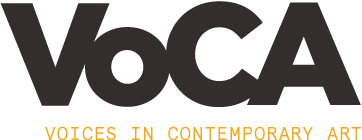Editor’s Note
We are pleased to launch the third season of VoCA Journal with an issue focused on collaborative approaches to the research and display of modern and contemporary art.
In the interview that opens this issue, Mark Dion discusses an epiphany that shaped his cross-disciplinary practice. Describing his student years as “somewhat schizophrenic” because he was reading Frankfurt School scholars by day while avidly fishing, camping, and birding on weekends, he recalls the moment that he realized that “the sharp critical tools I had been honing could actually be used to examine the things I really cared about—the culture of nature, and the protection of wild places and things.” Dion’s unique combination of skills and proclivities surfaced in Exploratory Works: Drawings from the Department of Tropical Research Field Expeditions, an exhibition he co-curated with Katherine McLeod (doctoral candidate, Department of History, New York University) and Madeline Thompson (Librarian and Archivist, the Wildlife Conservation Society) at the Drawing Center in New York. Exploratory Works re-contextualizes the contributions of celebrity naturalist William Beebe and his field teams of scientists and artists who pioneered the study of ocean and jungle life in situ from the early twentieth century through the mid-1960s.
Following Harvard Art Museums’ acquisition of the Schneider/Erdman Printer’s Proof Collection—a photographic archive that provides a core sample of projects by Manhattan-based photo journalists, fashion photographers, and artists during the 1980s and 1990s—Jessica Williams (Agnes Mongan Curatorial Intern at the Harvard Art Museums) and Gary Schneider (President, Schneider/Erdman Inc.) discuss the technical experimentation that characterized Schneider/Erdman’s work during those decades. Focusing on projects that compelled Schneider and John Erdman to collaborate with colleagues at Eastman Kodak, the National Gallery of Canada, and elsewhere, Schneider shares the backstory of photographic printing projects that he and Erdman undertook for clients including Robert Gober, Nan Goldin, and Madonna.
Another photographic archive that required collaborative research to process and make it accessible to the public is the Alfred Stieglitz Collection of Photographs at the Art Institute of Chicago. Gifted to the Art Institute in 1949 by Georgia O’Keefe, the Alfred Stieglitz Collection is a cornerstone of the museum’s photography holdings. In 2016, the Art Institute launched a robust and innovative online resource dedicated to this collection. For their contribution to this issue, Elizabeth Siegel (Curator of Photography at the Art Institute of Chicago) and Ariel Pate (Assistant Curator of Photography at the Milwaukee Art Museum and former curatorial assistant at the Art Institute of Chicago) lead a discussion with the cross-disciplinary team that realized this project which includes detailed images, object analyses, and digitized versions of primary source materials. Curators, conservators, conservation scientists, and digital experience team members who contributed to the site reflect on the fluid nature of their research and the complex networks of artists, processes and materials documented on the site.
Rounding out this issue is a report from Eleonora Nagy (Research Conservator, Whitney Museum of American Art), Anita Duquette (Archivist, Whitney Museum of American Art), and Joan Simon (Curator-at-Large, Whitney Museum of American Art from 2004-2009) on their long-term collaborative research concerning Alexander Calder’s kinetic installation, Calder’s Circus (1926-31). The authors explain how an extended period of research allowed them to explore Calder’s engineering and reinterpretation of the work based on actual circus acts he had seen. Studying archival materials and several films made of Calder performing Circus proved crucial to this endeavor, which has also been informed by a groundswell of renewed interest in documenting performative works by artists.
Cross-disciplinary teams were necessary to realize these diverse projects, each of which advances an innovative model for the stewardship of modern and contemporary art.
Robin Clark


